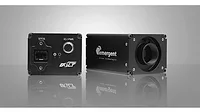Vision/Inspection/Detection
Emergent Vision Technologies Unveils Expanded Real-Time 3D/4D Reconstruction Capabilities

Image courtesy of Emergent Vision Technologies.
Emergent Vision Technologies is introducing its expanded real-time 3D/4D reconstruction capabilities within its eCapture Pro software during the 2024 NAB Show, set for April 13-17 at the Las Vegas Convention Center.
“Adoption of volumetric video is rapidly accelerating for applications spanning sports, entertainment, training and medicine,” says John Ilett, president and CTO at Emergent Vision Technologies. “Demand for more immersive user experiences has certainly fueled that trend, but advancements in the enabling camera and software technologies — such as those available from Emergent — are also helping to accelerate adoption further.”
eCapture Pro software offers an intuitive drag-and-drop interface for setting up, configuring and running multiple volumetric cameras, servers, storage, GPUs and other system components without the need for sophisticated vision expertise.
Previously, Emergent’s software first needed to record volumetric camera data to storage before it could perform post-3D reconstruction of the video. Now, proprietary algorithms enable eCapture Pro software to generate volumetric video in real time on a single server, allowing more immediate engagement and immersion in captured events as they unfold.
During NAB 2024, Emergent will showcase capabilities of its eCapture Pro vision software for generating volumetric video data in real-time. Emergent invites visitors to enter a high-quality virtual space reconstructed within a 7-ft. tall cylinder with a 3-ft. diameter. The space is reconstructed from volumetric data captured by 36 12-MP 10GigE cameras running at 30 fps. All images are transferred directly to a single NVIDIA RTXA6000 GPU via Emergent’s GPUDirect technology.
“Paired with advanced GigE cameras and hardware, the enhanced capabilities of Emergent’s eCapture Pro software promise to redefine how volumetric capture data is captured, processed, and reconstructed as high-quality immersive experiences,” Ilett says. “NAB attendees who visit our booth will be among the first to step into this exciting future for volumetric vision technology.”
Looking for a reprint of this article?
From high-res PDFs to custom plaques, order your copy today!







